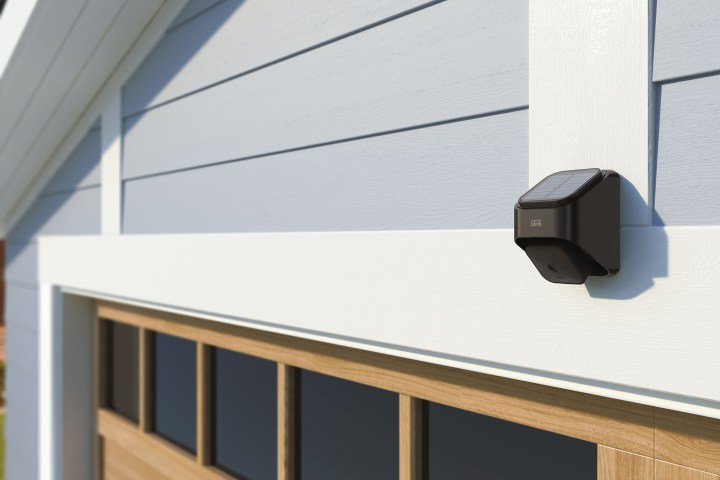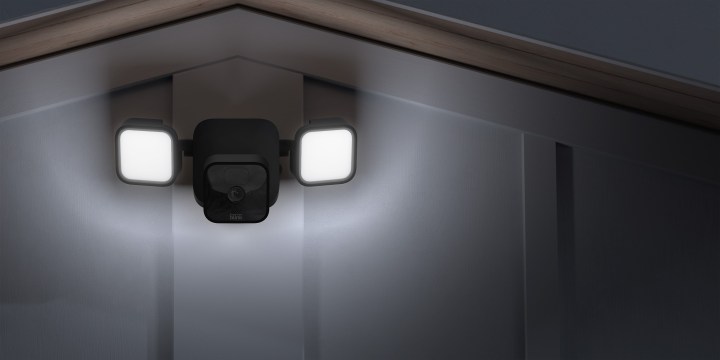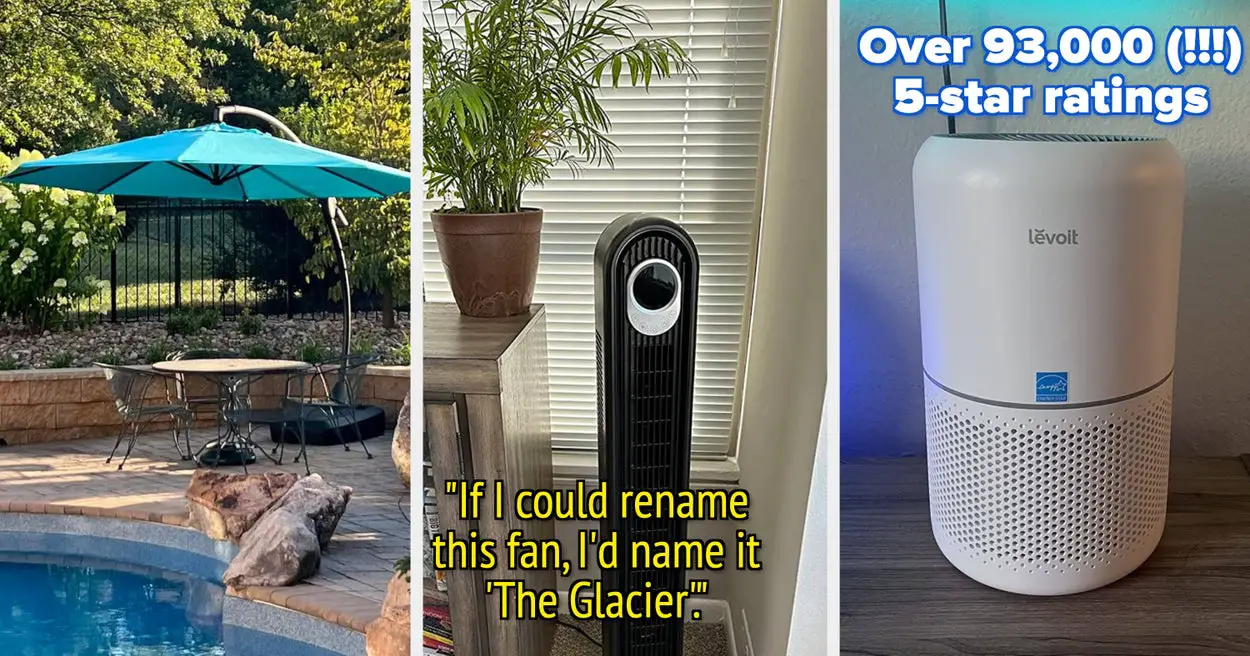The Blink Outdoor Camera is an affordable, versatile security camera that is just at home in the pouring rain as it is tucked away in a corner of your entryway. The camera has an MSRP of $100, but frequently goes on sale for around $70 or less. On its own, the Blink Outdoor Camera has infrared night vision, 1080p streaming and recording, two-way audio, and up to two years of battery life on just a pair of AA batteries.
That’s just on its own, though. You can improve the functionality of the cameras thanks to two accessories: Solar panel housing and a floodlight. The camera snaps into a built-in mount, while a short cable connects the camera to the accessory. This cable will either provide power via the solar panel or will allow the camera’s motion sensors to activate the floodlights.
The question is whether the additional cost of the accessories ($40 for the floodlight mount) is worth it. As far as I can tell, the solar panel can’t be purchased separately and must be bought as a package with the camera included.
The solar panel means no replacing batteries
If you connect your Blink camera to the solar panel, you don’t have to replace the batteries. For most people, spending $130 on a solar panel attachment for a security camera doesn’t make a lot of sense; after all, given Blink’s estimated two-year battery life on a single set of batteries, it will take ages to pay for itself.
The true benefit lies in convenience. If you own a seasonal property that you don’t visit often, the solar panel can be a great way to ensure you have continued power and monitoring without making an extra trip to replace the batteries on your camera when they start to die.

The solar panel is also just an easy way to reduce your impact on the environment. The camera takes charge from the panel, not the batteries — which means fewer things going into landfills.
The Blink Floodlight mount lights up your world
The Blink Floodlight is incredibly bright. At 700 lumens, it will light up the night when triggered. You can angle the twin LEDs to point in whatever direction you want, or even in different directions. It was incredibly easy to set up, too. I expected to spend time drilling pilot holes for the mount, but it comes with a mount you can slide under siding panels. This holds the camera securely in place to a surprising extent. I could pull it off the wall if I tried, but I certainly don’t see any normal windstorm dislodging it.

You can choose to turn the lights on or off at will, but I find it better to let the motion sensors do the work. When something walks in front of the camera, the lights will activate and illuminate absolutely everything in front of them. While the Blink Outdoor Camera typically uses infrared light to capture nighttime video, the floodlights cause it to switch to color, providing more clarity in the picture.
While this feature is still in beta, you can set up different trigger zones for the lights. This means passing cars won’t set off the camera if it’s near the road, as long as you set the road as a dead zone in the camera’s view. You can adjust the sensitivity of the motion sensors, the intensity of the infrared light, and much more. You can even choose to enable Early Notifications, another still-in-beta feature that alerts you the moment motion is detected.
Is the added cost worth it?
If you already have a Blink Outdoor Camera, you have to ask yourself whether the extra $40 for the floodlight mount is worth it — and whether you want to spend another $130 on the solar panel pack with the camera.
The Blink Floodlight is well worth the added expense. While security cameras add another layer of protection to your yard, the true benefit comes in the form of light. Even cameras with color night vision aren’t as effective as a floodlight that lets people know that someone is nearby who isn’t supposed to be. If you want to beef up your home security, spending an extra $40 for the floodlight mount is an easy choice.
It’s also worth noting that Blink recently released the Blink Wired Floodlight Camera. Listed for just $100 and offering 2,600 lumens of brightness, it’s one of the best ways to light up your property on a budget. If you don’t already have a Blink Outdoor Camera, this is without a doubt a better purchase than picking up the Outdoor Camera and Floodlight Mount. And even if you do have an Outdoor Camera, the 2600 lumens of brightness on the official Floodlight Camera is much more powerful than the 700 lumens found on the Floodlight Mount — so be sure to give it a closer look if you have a massive yard to light up.
If you don’t have any outdoor security cameras, the $130 for the Solar Panel plus the Blink Outdoor Camera is also worthwhile. It’s only $30 more than the regular Blink Outdoor Camera and you’ll save on out-of-pocket expense with batteries. On the other hand, if you already have an outdoor camera and you just want to add solar charging to it, there are easier methods. It would be more cost effective to invest in a set of rechargeable batteries than it would be to buy this model solely for the solar panel, unless you have a vacation home that you want to monitor from afar without any risk of the batteries dying.
I mounted the solar panel light inside my home in front of a second-floor window. It will receive plenty of sunlight to keep it charged and monitor the living room and doorway. The floodlight camera lives on my balcony right now, but I expect to get a lot of use out of it — and when I move to a larger home, I’ll pick up a few more for the other sides of the house.
Editors’ Recommendations
Source link










Leave a Reply